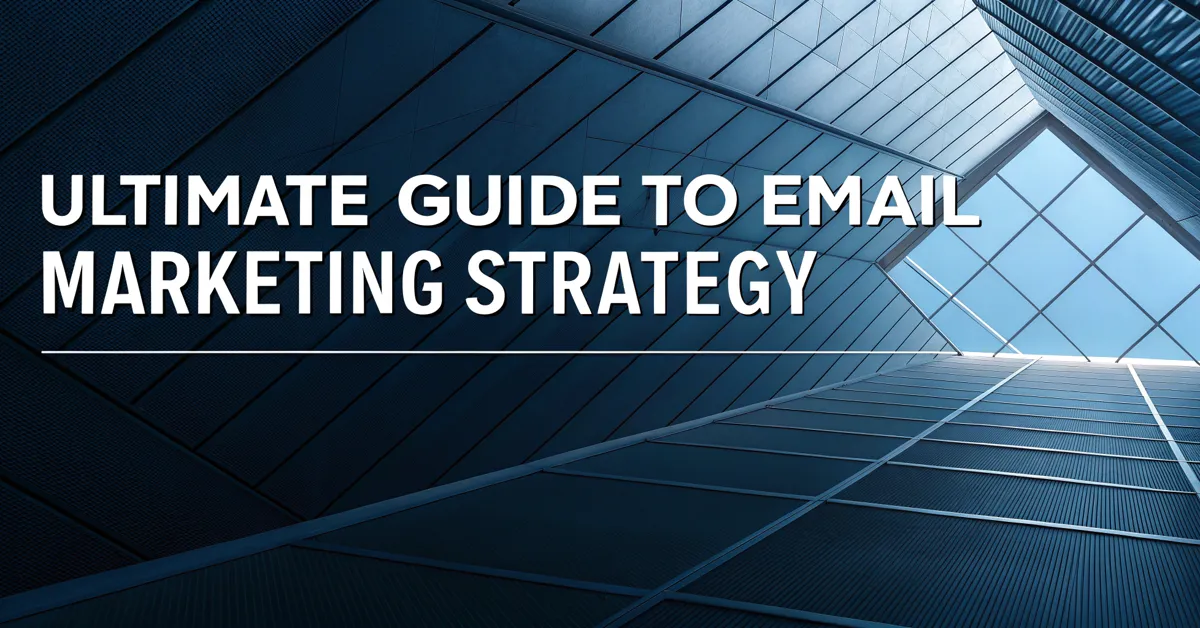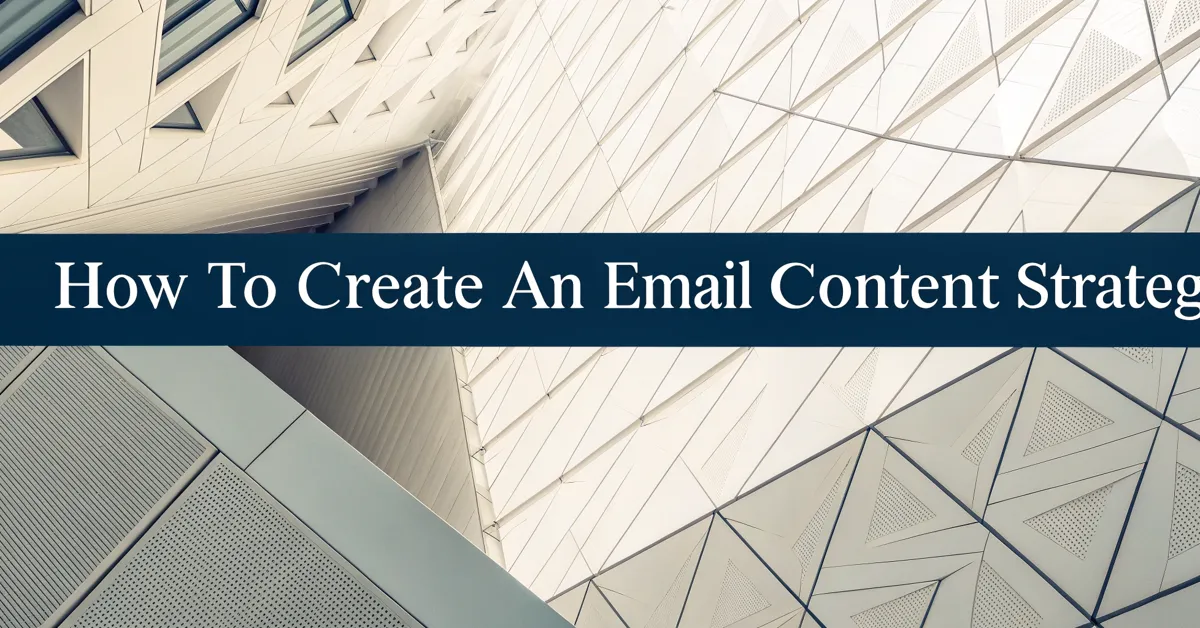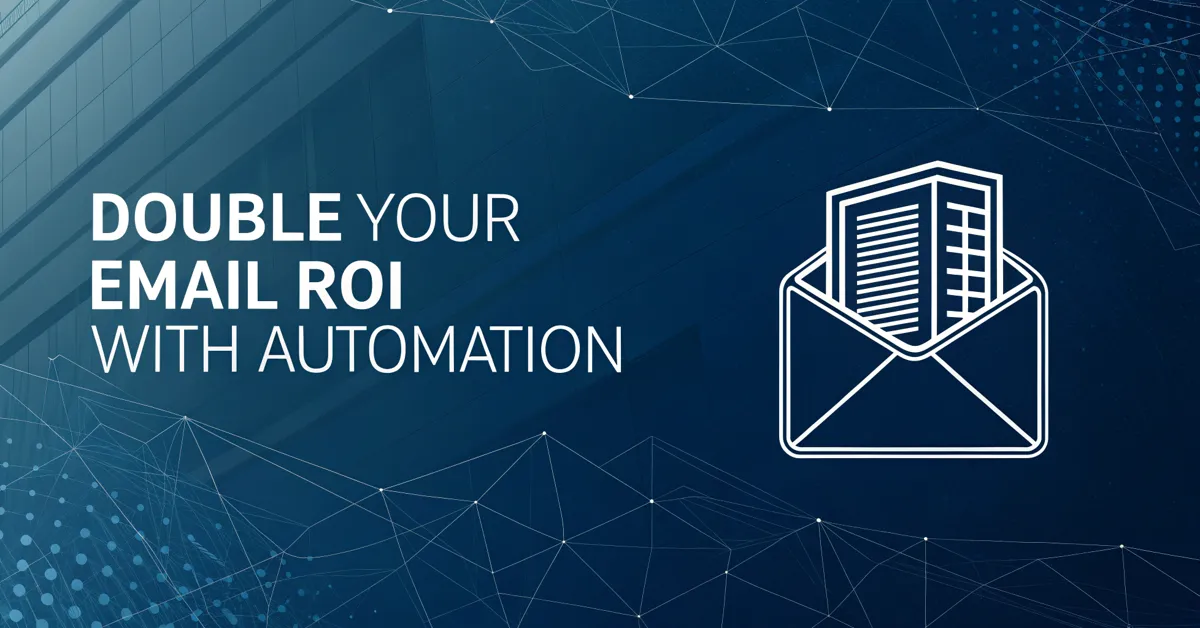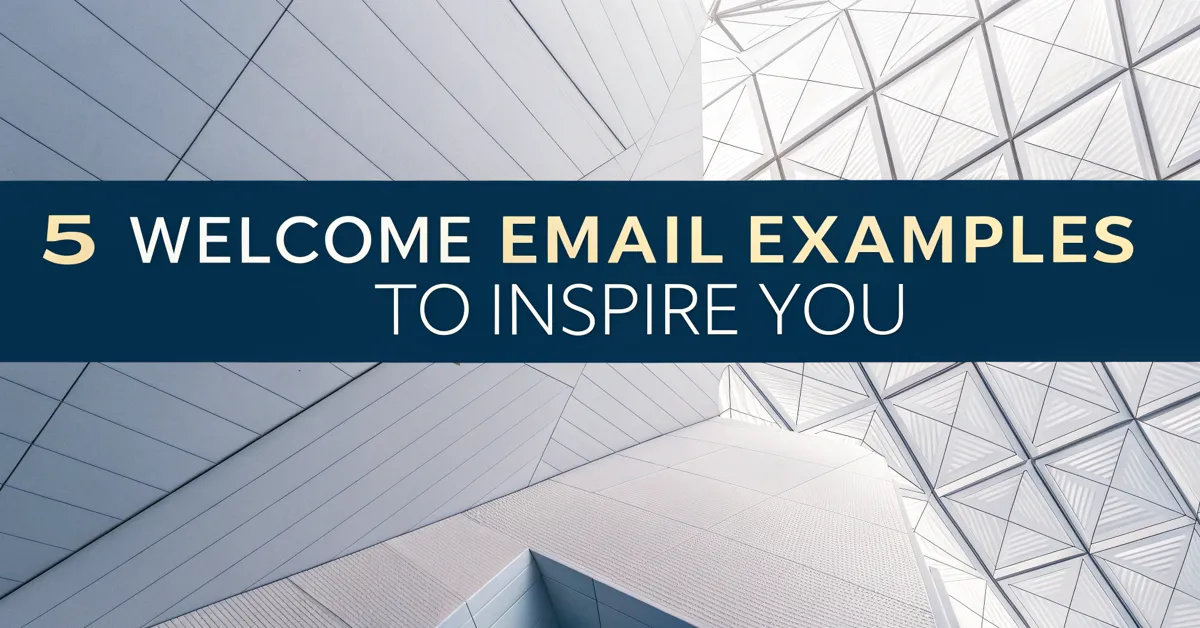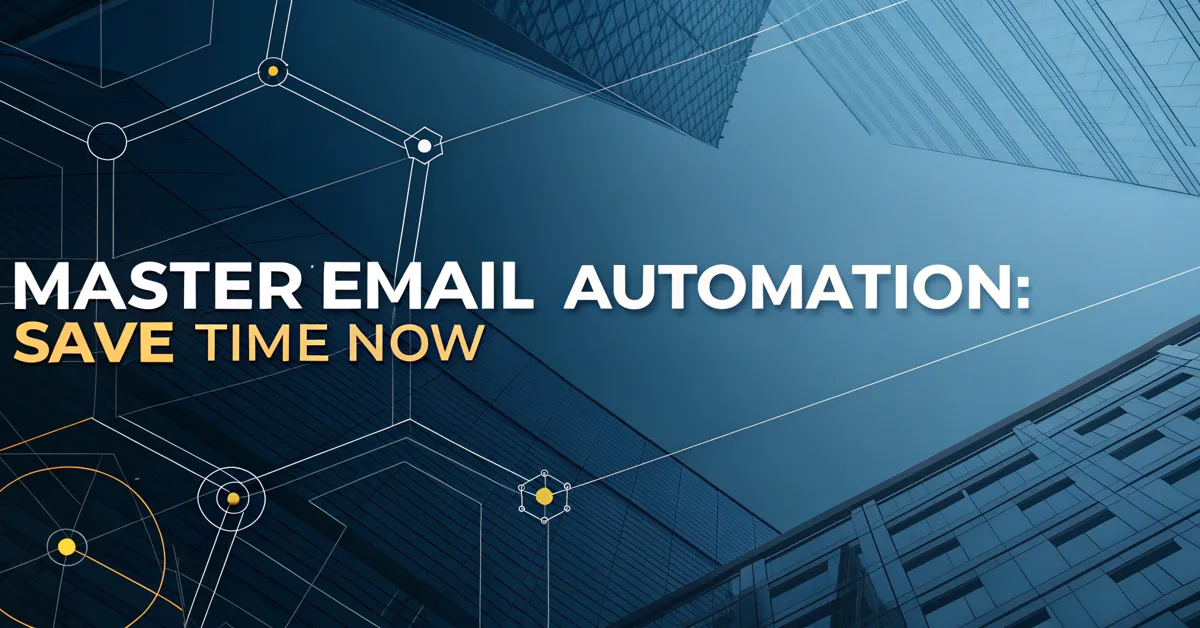Email marketing can feel like a shot in the dark. You pour time and effort into crafting messages, only to wonder if they’re even reaching the right people. But what if you could flip a switch and make every email count? It is possible. With the right strategy, you can transform your email marketing from a guessing game into a precise, powerful tool.
This guide will walk you through building a robust email marketing strategy, one that will help you connect with your audience and drive real business results. We’ll cover everything, from setting clear goals to segmenting your lists and measuring your progress. Let’s get to it.
What is an Email Marketing Strategy?
An email marketing strategy is a clear plan of action you use to achieve your goals by sending emails. A good strategy is more than sending out random messages. It is about sending the right message to the right people at the right time.
It’s a living plan that you refine as you learn what works best for your audience. Think of it like a road map: it shows you where you want to go with your email efforts. And it details how you will get there. Without a plan, you might end up off track, wasting time and resources on ineffective campaigns.
Your strategy also includes all the parts of the email marketing process. From growing your list and designing your templates to crafting your content and choosing your email frequency.
A clear strategy will help you make smart choices at each point. This ensures you stay focused and get the most from your email efforts. It also keeps you from wasting your resources.
Why is a Solid Email Marketing Strategy Essential?
A solid email marketing strategy is key for several reasons. It’s a smart way to make the most of email marketing, so it does more for your business.
First, it gives you a clear target. With a plan, your team understands the goal. This helps everyone to work in the same direction. It stops random actions and makes sure your efforts count. It also saves you from time and money you would spend on actions that don’t matter.
Second, it helps with consistency. A good plan means you’ll send emails on a regular schedule. This helps your audience expect your emails. And they know when they can look out for your next update.
Third, it lets you connect better with your readers. You can send them the right emails based on their interests. This is possible because you segment your email list. Which means your emails feel more personal and relevant. This way they are also more likely to bring in good results.
And last, it lets you track your progress. A good strategy includes how you will measure the success of your emails. This will help you know what works and what needs change. And makes sure you can keep getting better.
Key Elements of an Effective Email Marketing Strategy
Let’s look at the parts that make up a good plan. These pieces will ensure your email marketing gets good results and that every effort counts.
Define Clear Goals
The first step in crafting your email marketing strategy is to set clear goals. What do you want to achieve with email? More sales? More website visits? A stronger bond with your customers? Your goal must be specific and measurable. And it must fit with your overall business plan.
If you sell products online, a good goal might be “Increase product sales by 15% through email marketing in the next quarter.” This gives you a number to aim for. This is better than a goal like “Send more emails.” Your goals must have a target. This makes it easier to measure your success.
Here are a few goal ideas:
- Boost website traffic: Get more users to visit your site
- Grow brand awareness: Make more people know about your brand
- Improve customer loyalty: Build a stronger link with your users
- Increase product sales: Get more people to buy your products
- Generate leads: Get more people interested in what you sell
- Improve email engagement: Get more clicks and opens on your emails
Pick goals that will matter the most to your business. And make sure your plan is set up to help you reach them. You can also define goals for different types of emails. Such as welcome emails, promotional emails, and follow-up emails. Each of these types can have their own aim within your whole strategy.
Build Your Email List
Your email list is one of your most useful tools. So, you need to make sure to build it right. But do not buy lists. That can hurt your email deliverability. Focus on growing your list with people who are really interested in what you sell. This way they are more likely to open your emails and buy your products.
Here’s how you can build your email list the right way:
- Use signup forms on your website: Make it easy for visitors to join your email list. Put your forms in areas that get good attention. Like your homepage, sidebar, and footer. Make sure to use good forms that people want to use.
- Offer an incentive: People are more likely to join if you offer something in return. A free ebook, a coupon, or access to a useful resource will work. This will also help to get their interest and increase your list faster.
- Create opt-in forms: Be clear that you are asking people to join your list. And make sure they know what they’ll get from it. Use clear wording and add a checkbox that requires people to opt-in.
- Promote your list on social media: Use social media to make people aware of your email list. Put the link in your profiles and posts. Make sure your posts show the value of your emails.
- Run contests and giveaways: Use contests and giveaways to get new signups. Make sure to set rules about how emails will be used. The goal is to gain people who have a real interest in your brand.
- Use pop-ups: Pop-ups can be useful but use them with care. Make sure they do not make your website hard to use. Put a clear message and good call to action in them. Make sure that they are easy to close. And make it easy for people to say no if they don’t want to join your list.
Growing an email list that has real value is a process. Make sure to use good methods that build a good base of real followers who will like your emails.
Segment Your Email List
Not everyone on your email list has the same wants or needs. This is why list segmentation is so important. When you segment your list, you divide your contacts into small groups based on traits. This lets you send each group emails that match their wants. This will bring better results and make your emails more effective.
Here are a few common ways to segment your list:
- Demographics: This includes things like age, gender, place, and job. This can help if you sell a product for a specific group.
- Purchase history: Separate users based on what they have bought before. So, you can send them emails on products that they may be interested in based on that.
- Website activity: Track how users use your website. Then send emails based on pages they visited, and actions they took.
- Email engagement: Divide users based on how they deal with your emails. Those who open often, and those who do not. And those who have clicked on links versus those who have not.
- Signup source: Track where users joined your list from. This can help you see which sources are best. It also helps to make sure your emails are right for the users who came through each source.
By sending emails to small groups that have common wants, you can make your messages feel more personal. They will also be more likely to get attention from readers. This leads to more interaction and better results.
Choose the Right Email Software
The email software you use will play a huge part in your success. The right platform will make it easy to make, send, and track your emails. Look for software that matches your business needs. You will want to use a software that is easy to use, offers good support, and has good features that help you send effective campaigns.
Here are a few things you need to think about when choosing your software:
- Ease of use: Look for a platform that is easy to use and that has a clean user interface. Your team must have no problems using it.
- Automation: Choose a software that allows you to automate emails and do things based on actions. Like sending a welcome email when someone joins your list.
- Segmentation: Check if the software lets you segment your list so you can send the right emails to the right groups.
- A/B testing: Make sure you can test different parts of your emails. Like the subject lines and content. This will help you find out what works best.
- Reporting and analytics: Choose a software that has good reporting. It must show you opens, clicks, and conversions. This will help you track how well your emails are doing.
- Email templates: Look for a software that has good email templates. This way you won’t have to make all your emails from scratch. And it will also keep the design of your emails consistent.
- Integration: Make sure the software works well with other tools you use. Like your CRM and website platform.
- Customer support: Make sure the software has good support. If any issues come up, they should be easy to fix.
Do your homework before choosing your email software. Make sure to choose a software that has what you need. And make sure you can use all its features to help make your email marketing better.
Design Engaging Emails
The design of your emails plays a big part in if they get noticed or not. Your emails must be visually appealing and easy to read. If your emails look good and are easy to read, they’ll be more likely to get attention from readers.
Here are some tips to make your emails look better:
- Use a consistent design: Use the same brand colors, fonts, and layout for all your emails. This helps build brand awareness and makes your emails easier to recognize.
- Use a clear layout: Make sure your emails are easy to scan. Use clear headlines, short paragraphs, and bulleted lists to organize your information.
- Use good visuals: Add images and videos that are related to your message. Make sure your pictures are of high quality and optimized for email.
- Use a simple layout: Do not overdo the design with too many colors and elements. A clean design makes it easier for readers to focus on the message.
- Make them mobile-friendly: Most people open emails on their phones. So, make sure your emails look good on mobile. Use a responsive design that adapts to different screen sizes.
- Use a strong call to action: Make it easy for readers to know what you want them to do. Use clear and strong calls to action like “Buy Now” or “Learn More.” Use a button so it is easy for people to click on them.
Your design must support the goal of your email. Make sure to keep your designs simple. And make sure to add things that will lead to the results you want.
Create Valuable Content
Good content is at the core of a good email. Your emails should give real value to your readers. If not they might stop opening your emails. Make sure to send content that they want to read, and find useful.
Here are a few good ideas for content:
- Educational content: Share tips and advice that help your users. If you sell tools, share how to use them better. This kind of content will show your skills and help users trust your brand.
- Product updates: Tell users about new products or features. Use clear wording and pictures so they will want to know more. If possible add videos that will show them how they can use the products.
- Exclusive offers: Send exclusive discounts and deals to your subscribers. People like to get a good deal and it is an effective way to get more sales from your email list.
- Customer stories: Share stories from your users. This will show your brand’s value and will also help build trust.
- Personalized recommendations: Use data you have about each user to share product recommendations they may like. Personal emails get better results than general ones.
- Behind-the-scenes content: Share what happens inside your business. This will help you build a stronger link with your audience and make your brand more human.
Your content must always be about your audience. When you focus on giving real value, you build trust. This will also get your users to look forward to your emails.
Automate Your Email Campaigns
Email automation is a key feature in a good strategy. It means sending emails based on actions that your users take. This way your emails feel more personal and happen at the right time.
Here are a few ways to automate your email campaigns:
- Welcome emails: Send a welcome email when a user joins your list. This is a great chance to show your brand and make them know what to expect.
- Abandoned cart emails: Send an email to people who added products to their cart but did not complete their purchase. Remind them about the items, and offer a deal so they complete the purchase.
- Post-purchase emails: Send a follow-up email after a user buys a product. This can be a thank you email, a link to track their order, or other information they might need.
- Birthday emails: Send a special email to a user on their birthday. Offer a special deal or some kind of gift to help boost their link with your brand.
- Re-engagement emails: Send emails to users who have not opened your emails for some time. Try to get them to engage with you again, or remove them from your list.
- Behavior-based emails: Send emails based on their actions on your website. If a user looks at a product category, send them emails about products in that category.
Automation will free up your team so you can focus on other tasks. It will also make sure you are sending your emails to the right people at the right time. This will make your emails more effective and help you achieve your goals.
Test and Optimize Your Emails
No email campaign is ever perfect. It is crucial that you always test and improve your emails. When you track and test your results, you will find ways to make them better over time.
Here are a few things you should test:
- Subject lines: Test different subject lines to see which ones get the most opens.
- Email copy: Try out different wording in your email body to see what wording works best.
- Call-to-action: See which calls to action get the most clicks. Test different wording, buttons, and locations in your emails.
- Email layout: See which design gets the most interaction. Test different layouts, visuals, and ways of placing your content.
- Email sending time: Test different send times to see which time works best for your audience.
Use A/B testing to test different parts of your emails. Send different versions of your emails to a small group of users. Then see which version does better. Use the data you find to make smarter choices. This will also make your emails more effective.
Measure Your Results
Measuring your results is the only way you will know if your efforts are working or not. Use analytics to track your results. Look at the data to see how users are interacting with your emails. This will help you make smart choices based on facts.
Here are the most important things to track:
- Open rate: The percent of users who opened your emails. A high open rate means your subject lines are getting users to notice.
- Click-through rate (CTR): The percent of users who clicked on a link in your emails. This shows how well your emails are getting people to take action.
- Conversion rate: The percent of users who did what you wanted them to do. Like buying a product or filling in a form. This helps you to see the results that your emails are producing.
- Unsubscribe rate: The number of users who removed themselves from your list. A high unsubscribe rate means your emails are not getting interest from users and they are not liking what you send.
- Bounce rate: The percent of emails that did not get delivered. A high bounce rate means your list is out of date or has bad email addresses.
- List growth rate: How much your list grows. This will show how effective your list-building strategies are.
Use the data you get to find trends. And to make your emails better and more effective. Regular tracking will help you keep on top of the performance of your email campaigns. And help you achieve your goals.
Advanced Strategies to Boost Your Email Marketing
If you want to take your email marketing to a new level, use these advanced strategies. They will make your emails more effective and will get you better results.
Personalization Beyond Names
Personalization is more than just adding a name to an email. Use the data you have about each user to send emails that match their needs. This way you can send emails that are highly relevant. Which will also get better results.
Here are a few ways to add more personalization:
- Behavioral personalization: Send emails based on actions that users have taken on your website.
- Content personalization: Send emails based on the type of content that a user has liked.
- Location-based personalization: Send emails based on a user’s place.
- Purchase history personalization: Send emails based on things a user has bought in the past.
- Lifecycle-based personalization: Send emails based on where users are in their journey with your brand.
The more you can make your emails match the wants of each user, the more likely you are to engage them. And make them take action.
Use Dynamic Content
Dynamic content means that some parts of your emails change based on the user who opens them. This is very useful in making your emails more personal. And makes sure they match the wants and actions of each person.
Here are some ways to add dynamic content:
- Change the images: Show products that match a user’s past actions, and things they have viewed.
- Change the offers: Show offers that match a user’s wants and needs.
- Change the call to action: Use a call to action that matches the user’s stage in the buying process.
- Change the content: Show different content based on a user’s past behavior, and interests.
When you make your content more personal, you make your emails more useful and get better results.
Re-engagement Campaigns
Not everyone will open every email. Some users may stop engaging with you over time. This is why re-engagement emails are crucial. This will help you to bring users back who have lost interest in your emails.
Here’s how to make re-engagement emails:
- Segment inactive users: Divide users based on how long they have been inactive. And send different emails to each group.
- Send a simple “We Miss You” email: Use a personal tone. And remind them about the value of your emails.
- Offer an exclusive deal: Make a deal to get them to engage again. A special discount, a free gift, or other offers may be effective.
- Ask for feedback: Ask inactive users why they have stopped engaging. This information will help you improve your emails and re-engage them.
- Offer a preference update: Give users the option to change what kind of emails they get.
- Clean your list: If a user does not engage with your re-engagement efforts, remove them from your list.
Re-engagement emails are key to maintaining your list. And will make sure you are only sending emails to people who are interested.
Leverage Transactional Emails
Transactional emails are automated emails that you send when a user does a certain action. Such as buying a product, or changing their password. While these emails are not marketing emails, they can be used to improve your marketing.
Here’s how to use transactional emails effectively:
- Add personalized content: Use these emails to add personal recommendations.
- Add cross-sell and up-sell offers: Use these emails to show extra products or better deals.
- Use good design: Use your brand colors, fonts, and design to make them look good and reliable.
- Use tracking: Use links in your transactional emails to track opens and clicks. This will help you know how well they are doing.
- Use them to build your brand: Keep your tone consistent with your marketing emails. This way you’ll strengthen your brand’s message.
Transactional emails are often overlooked, but they’re a great way to get attention from your users. So, use them to improve your email results.
Integrate Email with Other Channels
Your email marketing should work with all other marketing efforts. By using them together, you’ll improve your brand’s message and increase your results.
Here’s how to use email with other marketing channels:
- Social media: Use email to get people to follow you on social media. And use social media to promote your email list.
- Website: Use clear calls to action on your website to get people to join your email list.
- Content marketing: Use emails to get users to read your content. And add a sign up form to your content so you can get more email sign ups.
- Paid advertising: Use email lists to target paid ads. And use ads to promote your email list.
- Customer relationship management (CRM): Make sure your email software works well with your CRM. So you can use the data you have about your users.
Your marketing efforts must be part of the same message. When you integrate them all, you create a more effective plan that will give you the results you want.
Ethical Considerations in Email Marketing
When you plan your email marketing, always make sure to follow ethical practices. Your goal is to build trust with your users and respect their privacy. This means never getting on their bad side, or being seen as untrustworthy.
Here are some ethical issues to think about:
- Always get consent: Only send emails to users who have given you their permission. Do not buy lists or add emails without their consent. This can hurt your brand image and it can also make sure your emails get sent to the spam folder.
- Be transparent: Tell users what type of emails they will be getting, and how often. Also make sure to include your business name and address in every email.
- Make unsubscribing easy: Give users a clear option to remove themselves from your email list. They must be able to do this easily, and with no extra steps.
- Protect user data: Handle your user’s data with care. And use it only for the purposes that they have allowed. Make sure you comply with all data protection rules.
- Avoid misleading content: Do not use misleading content in your subject lines or email body. Make sure to show real offers and provide correct information.
- Send valuable content: Make sure the emails you send are valuable for your users. Only send content that is relevant and useful to them.
Following ethical rules builds trust with your audience. This also makes sure your email campaigns are seen as good.
Final Thoughts: Building a Long-Term Email Marketing Strategy
Building a solid email marketing strategy is a journey, not a quick fix. Start by setting clear goals, and make sure you are growing your list the right way. Segment your users, design good emails, and always try to send valuable content. Use automation to make your emails more efficient. Test and track everything to improve your approach over time.
Remember that email marketing is more than just sending messages. It’s about building links with your audience, and making a lasting impression. Keep learning and adjusting your plan. This way, you will make sure to get the most from your email efforts.
By following the points in this guide, you can transform your email approach. And make it a power tool that helps you achieve your business goals. Now, take what you’ve learned and create an email marketing strategy that brings real results.
